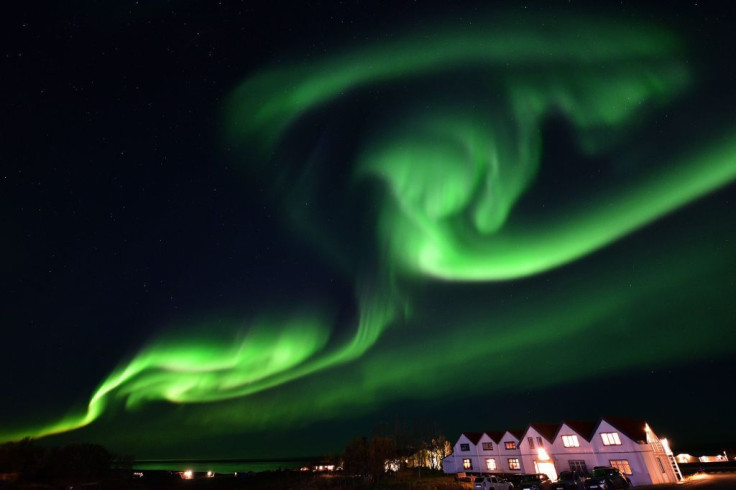NASA Shares Stunning Image Of Massive 'Dragon' Aurora Over Iceland's Night Sky [PHOTO]

NASA recently captured the incredible sight of a massive "dragon" aurora dancing across the night sky over Iceland.
On its website, NASA shared a stunning photo of a dragon-shaped aurora that appeared in the Icelandic sky earlier this month. An aurora is caused by particles emanating from the Sun that collide with the Earth's atmosphere. Upon striking the atmosphere, the excited atoms create a gorgeous light show.
"Have you ever seen a dragon in the sky? Although real flying dragons don’t exist, a huge dragon-shaped aurora developed in the sky over Iceland earlier this month," NASA said of the image.
This is NASA's Astronomy Picture of the Day! Dragon Aurora over Iceland https://t.co/vx7puJyKac pic.twitter.com/QRflfwFQxc
— NASA Photos (@nasa_photos) February 18, 2019
The view was so mesmerizing that the photographer's mother braved the freezing temperatures to watch the display and was captured in the foreground of the photo. The aurora also came as a surprise, according to the space agency, as no sunspots have been seen on the Sun so far this month.
Meanwhile, a new study published last month revealed the differences between the northern lights (the aurora borealis) and south (the aurora australis). It was previously believed that the auroras in the opposite poles of the Earth mirrored each other, but scientists later found that they didn't exactly line up, though they had no idea why.
New research shows, however, that asymmetry in Earth's magnetic tail is the main cause of these two auroras not matching up. The magnetic tail is created by interactions between our planet and the Sun.
Anders Ohma, a doctoral candidate at the University of Bergen in Norway and lead author on the new study, explained in a statement released by the journal that the asymmetry is caused by the complete opposite of what they initially thought.
"The reason this is exciting is that earlier we have thought that the asymmetry in the system enters the magnetosphere by a mechanism called tail reconnection," Ohma said. "What this paper shows is that it's possible that it is actually the opposite."
According to the study, the solar wind's (the stream of particles emanating from the Sun) magnetic field doesn't always line up precisely with Earth's. When it is mismatched, this results to asymmetry between the North and South Poles being introduced into the planet's magnetic field. This, in turn, causes the differences between the northern and southern auroras.
The research was published in the Journal of Geophysical Research: Space Physics.
© Copyright IBTimes 2024. All rights reserved.





















